Types of dry eye. Understanding Dry Eye Disease: Types, Causes, and Treatment Options
What are the main types of dry eye disease. How do tear production and evaporation affect eye health. When should you seek treatment for dry eye symptoms. What are the most effective management strategies for different forms of dry eye.
The Importance of Tears for Eye Health
Tears play a crucial role in maintaining overall eye health and clear vision. Produced by the lacrimal glands, tears are composed of proteins, electrolytes, and vitamins that are essential for preserving the health of the eye surface and preventing infection. They continuously clean, nourish, and protect the eye surface while keeping it moist and washing away dust and debris.
The tear film consists of three distinct layers:
- Lipid (oil) layer: Prevents evaporation of the water layer
- Water layer: Provides hydration and nutrients
- Mucus layer: Helps spread tears evenly over the eye surface
When these layers do not function properly, tears can either evaporate too rapidly or fail to reach the entire eye surface, leading to dry eye symptoms.

Two Main Types of Dry Eye Disease
Dry eye disease can be categorized into two predominant forms:
1. Aqueous Dry Eye
Aqueous dry eye is characterized by tear deficiency. It occurs when the lacrimal glands don’t produce enough of the watery component of tears. This condition is also known as keratoconjunctivitis sicca or aqueous tear-deficient dry eye.
2. Evaporative Dry Eye
Evaporative dry eye happens when tears dry up too quickly to protect the eyes effectively. This can be due to problems with the composition of tears or changes in the eye or environment.
Causes of Aqueous Dry Eye
Several factors can contribute to aqueous dry eye:
- Aging: As eyes age, they may become less able to produce tears
- Medical conditions: Diabetes, rheumatoid arthritis, lupus, scleroderma, Sjogren’s syndrome, thyroid disorders, and vitamin A deficiency
- Medications: Antihistamines, decongestants, hormone replacement therapy, antidepressants, blood pressure medication, acne medicine, birth control, and Parkinson’s disease medications
- Laser vision correction surgery: May temporarily affect tear production
- Damage to lacrimal glands: Due to inflammation or radiation
Factors Contributing to Evaporative Dry Eye
Evaporative dry eye can result from various causes:
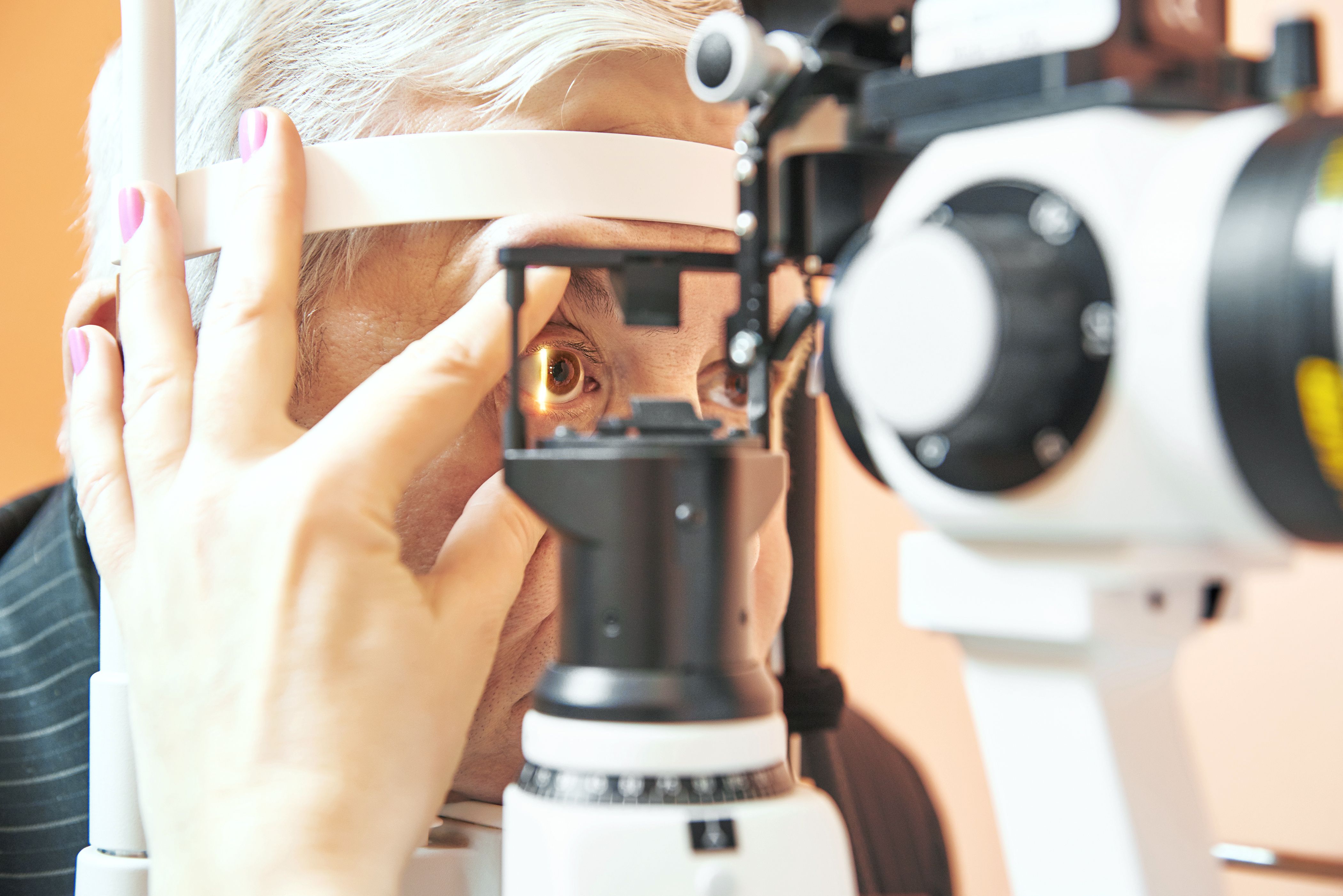
- Meibomian gland dysfunction: Clogged glands inside the eyelids that produce the oil in tears
- Blepharitis: Inflammation of the eyelid
- Skin conditions: Such as rosacea
- Environmental factors: Wind, smoke, or dry air
- Reduced blinking: Often associated with prolonged screen time or reading
- Eyelid problems: Ectropion (outward-turning eyelids) or entropion (inward-turning eyelids)
- Increased eye surface exposure: Due to thyroid issues causing eye bulging or after certain eye surgeries
Recognizing Dry Eye Symptoms
How can you tell if you’re experiencing dry eye disease? Common symptoms include:
- A stinging, burning, or scratchy sensation in the eyes
- Stringy mucus in or around the eyes
- Increased sensitivity to light
- Eye redness
- A feeling of having something in your eyes
- Difficulty wearing contact lenses
- Difficulty with nighttime driving
- Watery eyes (the body’s response to irritation)
- Blurred vision or eye fatigue
When to Seek Treatment for Dry Eye
Is it time to consult an eye care professional about your dry eye symptoms? Consider seeking treatment if:

- Symptoms persist for more than a few days
- Discomfort interferes with daily activities
- Vision is affected
- Over-the-counter treatments provide no relief
- You experience eye pain or redness
Early intervention can prevent complications and improve quality of life.
Treatment Options for Dry Eye Disease
How is dry eye disease managed? Treatment approaches vary depending on the type and severity of the condition:
For Mild Cases:
- Over-the-counter artificial tears
- Lifestyle changes (e.g., increasing humidity, taking breaks from screen time)
- Eyelid hygiene practices
For Moderate to Severe Cases:
- Prescription eye drops (e.g., cyclosporine, lifitegrast)
- Punctal plugs to retain tears
- Intense pulsed light therapy for meibomian gland dysfunction
- Autologous serum eye drops
- Oral medications (e.g., omega-3 fatty acid supplements)
A comprehensive eye exam is crucial for determining the most appropriate treatment plan.
Prevention Strategies for Dry Eye
Can dry eye disease be prevented? While not always avoidable, certain strategies may help reduce the risk or severity of dry eye:
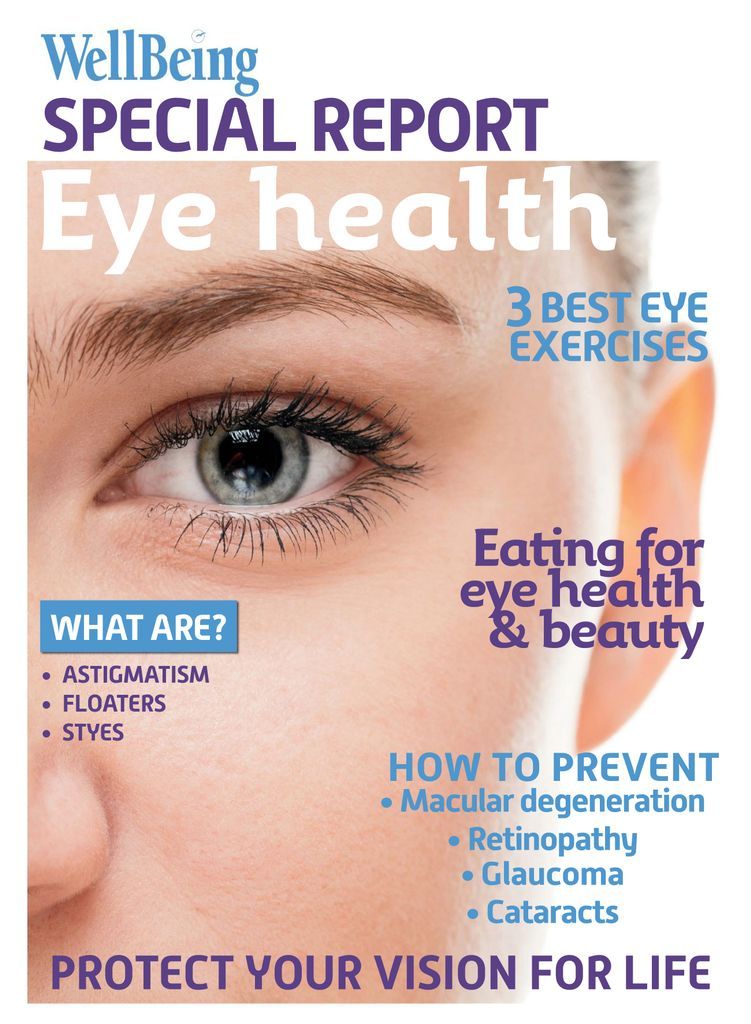
- Maintain good eyelid hygiene
- Stay hydrated
- Use a humidifier in dry environments
- Take regular breaks during screen time (follow the 20-20-20 rule)
- Wear wraparound sunglasses in windy conditions
- Quit smoking and avoid smoke-filled areas
- Consider dietary changes, including increased intake of omega-3 fatty acids
Implementing these preventive measures can contribute to overall eye health and comfort.
The Impact of Dry Eye on Quality of Life
How does dry eye disease affect daily life? The condition can have significant impacts:
- Reduced work productivity
- Difficulty reading or using digital devices
- Challenges with outdoor activities
- Increased risk of eye infections
- Emotional distress and decreased overall well-being
Understanding these impacts underscores the importance of proper management and treatment.
Advances in Dry Eye Research and Treatment
What new developments are emerging in dry eye research and treatment? Recent advancements include:
- Novel drug delivery systems for sustained release of medications
- Personalized treatment approaches based on genetic factors
- Stem cell therapies for lacrimal gland regeneration
- Neurostimulation devices to increase tear production
- Improved diagnostic tools for earlier and more accurate detection
These innovations offer hope for more effective management of dry eye disease in the future.
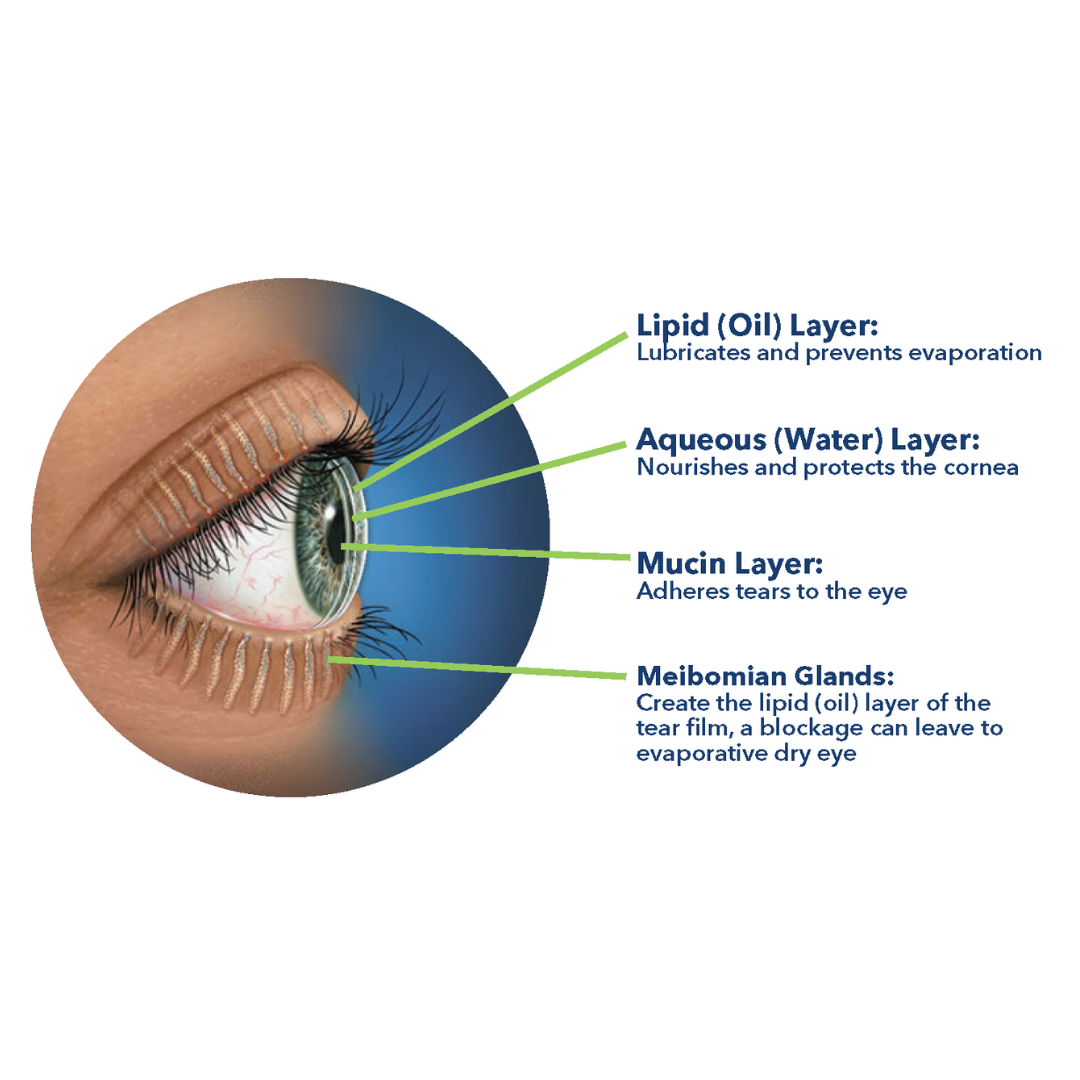
Dry eye disease is a complex condition with various causes and manifestations. Understanding its types, recognizing symptoms, and seeking appropriate treatment are crucial for maintaining eye health and quality of life. Whether you’re dealing with aqueous deficiency or evaporative dry eye, a range of treatment options is available to provide relief and prevent complications. By staying informed about the latest developments in dry eye research and working closely with eye care professionals, individuals can effectively manage their symptoms and protect their vision for years to come.
As research continues to advance our understanding of dry eye disease, new treatments and management strategies are likely to emerge. This ongoing progress offers hope for improved outcomes and quality of life for those affected by this common but often underdiagnosed condition. Remember, early intervention and consistent care are key to managing dry eye disease effectively and maintaining optimal eye health.

Reasons for Dry Eyes and Common Types
Written by Rachel Reiff Ellis
Medically Reviewed by Neha Pathak, MD on December 03, 2021
- When Your Eyes Don’t Make Enough Tears
- When Your Tears Don’t Stick Around Long Enough
- Other Causes
There are two main reasons for dry eye. Either your eyes don’t make enough tears, or your tears aren’t sticking around long enough to keep your eyes moist.
You can have one type of dry eye. You can also have both at the same time.
You may hear this called aqueous tear-deficient dry eye. A gland in the corner of your eye called your lacrimal gland makes your tears. Normally, this gland makes enough moisture to keep your eye healthy. Tears wash away dust and anything else that may fall in. They also protect your peepers from germs and infection.
When your lacrimal gland doesn’t make enough tears, it causes dry eye. Another name for this type is keratoconjunctivitis sicca. You might have it because your eyes have aged and aren’t able to make tears the way they used to.
You might also have it because of a medical condition, like:
- Diabetes
- Rheumatoid arthritis
- Lupus
- Scleroderma
- Sjogren’s syndrome
- Thyroid disorders
- Vitamin A deficiency
You may also get this as a side effect of a medicine, like:
- Antihistamines
- Decongestants
- Hormone replacement therapy
- Antidepressants
- Blood pressure medication
- Acne medicine
- Birth control
- Parkinson’s disease meds
Sometimes, lacrimal glands can have trouble making enough tears after laser vision correction surgery. This usually goes away after a few months. You can also get this type of dry eye if inflammation or radiation damages your lacrimal glands.
When your tears dry up too quickly to help protect your eyes, you have something your doctor may call evaporative dry eye. Sometimes it happens because of a problem with the makeup of your tears. Other times, it comes from changes to your eye, or the environment.
Tears have three layers: an oily outer, a watery middle, and an inner mucus layer. The oily outer layer helps keep the watery middle from evaporating too quickly. The mucus one spreads tears evenly over the surface of your eye. A problem with any of these can cause dry eye.
Glands inside your eyelids called meibomian glands make the oil in your tears. Sometimes they get clogged. When that happens, your tears don’t get enough oil. The watery layer of your tears loses its protection, and your tears evaporate.
This is common in people who have a condition called blepharitis (inflammation of the eyelid) or folks with skin conditions like rosacea.
Sometimes, dry eye happens because you can’t keep moisture in your eye long enough. Tears don’t dry up. They just leave.
Reasons for this include:
- Things in the environment like wind, smoke, or dry air
- Not blinking enough, as may happen when you’re staring at a screen or reading
- Eyelid problems like ectropion (your eyelids turn outward) or entropion (your eyelids turn inward).
 Sometimes, the eyes can’t close completely after cosmetic eyelid surgery.
Sometimes, the eyes can’t close completely after cosmetic eyelid surgery. - If the exposed surface of your eye gets bigger, your tears may have a hard time covering it. This can happen if you have thyroid issues that make your eyes bulge, or if you have eye surgery that opens your eye too far.
Top Picks
Types of Dry Eye Disease
Think You May Have Dry Eyes? Schedule a Consultation Today.
- Name*
- Email*
- Phone*
- CAPTCHA
Types of Dry Eye Disease
youtube.com/embed/AS7BSFk0_FU” frameborder=”0″ allow=”accelerometer; autoplay; clipboard-write; encrypted-media; gyroscope; picture-in-picture” allowfullscreen=””>
Why are Tears important?
Tears are necessary for overall eye health and clear vision. Tears are produced by the lacrimal glands and consist of proteins, electrolytes and vitamins that are critical to maintain the health of the eye surface and to prevent infection. They are constantly produced to clean, nourish, and protect the eye surface. Tears bathe the eye’s surface keeping it moist and wash away dust and debris. Any condition that alters the proper production of tears can make the eyes unhealthy and result in dry eye.
Tears are comprised of 3 layers: lipid (oil), water, and mucus. The composition of these components is what helps to protect and nourish the surface of our eyes. The lipid or oil layer prevents the evaporation of the water layer. The mucus layer helps spread the tears evenly over the eye surface. When these layers are not functioning properly, the tears can either evaporate too rapidly or they do not reach the entire eye surface, which will then cause the symptoms of dry eyes.
When these layers are not functioning properly, the tears can either evaporate too rapidly or they do not reach the entire eye surface, which will then cause the symptoms of dry eyes.
There are 2 predominant forms of dry eye:
aqueous and evaporative.
Aqueous Dry Eye
Aqueous dry eye is characterized by tear deficiency. It occurs when the lacrimal glands don’t produce enough of the watery component of tears. In recent years, we have learned that true reduced tear production is rare. What we know now is that the problem almost always originates with blockage of the tiny Meibomian Glands in our eyelids. These glands produce essential oils that form the top layer of the tear film and are the core protective element that is essential to long-term visual comfort.
Evaporative Dry Eye 0r Meibomian Gland Dysfunction (MGD)
Evaporative dry eye affects 65% of dry eye patients. It is caused by Meibomian gland dysfunction (MGD), which creates a deficiency in the oil layer of the tear film. These glands make the lipid or oily part of tears that slows evaporation and keeps the tears stable. This can be the beginning of other dry eye disease problems including damage to the cornea and sight-related issues.
These glands make the lipid or oily part of tears that slows evaporation and keeps the tears stable. This can be the beginning of other dry eye disease problems including damage to the cornea and sight-related issues.
When the Meibomian glands are blocked or the glands have been compromised, the eye becomes exposed. Gland blockages can occur over time from debris that is caught in the eyelids, digital device and computer usage and, for women, just putting on make-up over the course of many years.This leads to dry eye signs and symptoms. This is known as MGD or Meibomian Gland Dysfunction. MGD is easy to diagnose. The treatment of MGD is essential for the long term management of dry eye.
Meibomian gland dysfunction (MGD) is perhaps the most common cause of dry eye and has without a doubt been the most challenging to treat. Traditional therapies have failed to consistently provide effective results leading to ongoing suffering and frustration for patients and physicians alike.
Normal Gland Structure
Gland Shortening and Loss
Significant Gland Loss
Severe Gland Loss
Learn more about Dr. Cremers’s cutting edge Meibomian Gland Treatment Dysfunction for those who have severe dry eye syndrome.
Damascus
High Point Center
26135 Ridge Road
Damascus, MD 20872
Rockville, Maryland
One Central Plaza
11300 Rockville Pike, Suite 1202
Rockville, MD 20852
Washington, DC
Van Ness Center
4301 Connecticut Avenue, NW, Suite 125
Washington, DC 20008
Phone: (301) 591-1794 • Fax: (301) 896-0968
www.eyewhitemd.com • www.voeyedr.com
Dry Eye Syndrome: Symptoms and Treatment
Ophthalmologists from the Lucky Look chain of optics talk in detail about dry eye syndrome – symptoms, causes of the disorder, its diagnosis and treatment.
What is dry eye syndrome
Another name for the disorder is xerophthalmia. This is a pathological condition in which the natural hydration of the cornea is disturbed. This happens when the eye partially or completely loses the ability to produce tear fluid.
This is a pathological condition in which the natural hydration of the cornea is disturbed. This happens when the eye partially or completely loses the ability to produce tear fluid.
Also, tear fluid can be produced in normal volume, but evaporate quickly.
Causes
Dry eye syndrome can develop for a wide range of reasons – from internal failures of the body to the external environment. But more often, a combination of factors leads to the development of chronic dryness.
Let’s consider the main reasons:
- Long work at the computer – while using a computer or other gadgets, the blinking frequency is significantly reduced. This leads to drying of the mucous membrane of the eye. If at the same time a person is in a room with dry air (for example, in an office where there are several computers), the situation is aggravated;
- Age and hormonal changes – one of the reasons for the development of dry eye syndrome can be menopause in women;
- The quality of the tear fluid – the tear consists of water, mucin and lipids.
 If the percentage of any of the components of the tear is reduced, the normal nutrition of the eye is disturbed. For example, if there are not enough lipids in the tear, the liquid will quickly evaporate, resulting in chronic dryness;
If the percentage of any of the components of the tear is reduced, the normal nutrition of the eye is disturbed. For example, if there are not enough lipids in the tear, the liquid will quickly evaporate, resulting in chronic dryness; - The quality and volume of tear fluid produced can be affected by a variety of conditions, including diabetes or rheumatoid arthritis. Also, pathology can develop against the background of taking medications. As a rule, these are antihistamines or anti-inflammatory drugs, as well as COCs;
- Lack of sleep, together with other factors, can lead to the development of the disorder.
Symptoms
Patients with dry eye syndrome have characteristic symptoms:
- Burning, feeling of “sand in the eyes”;
- Itching and pain;
- Redness of the eyes;
- Photophobia and eyelid edema may occur.
In the early stages, the discomfort experienced by the patient may be subtle, but when the pathology reaches a higher severity, it will be impossible to ignore xerophthalmia.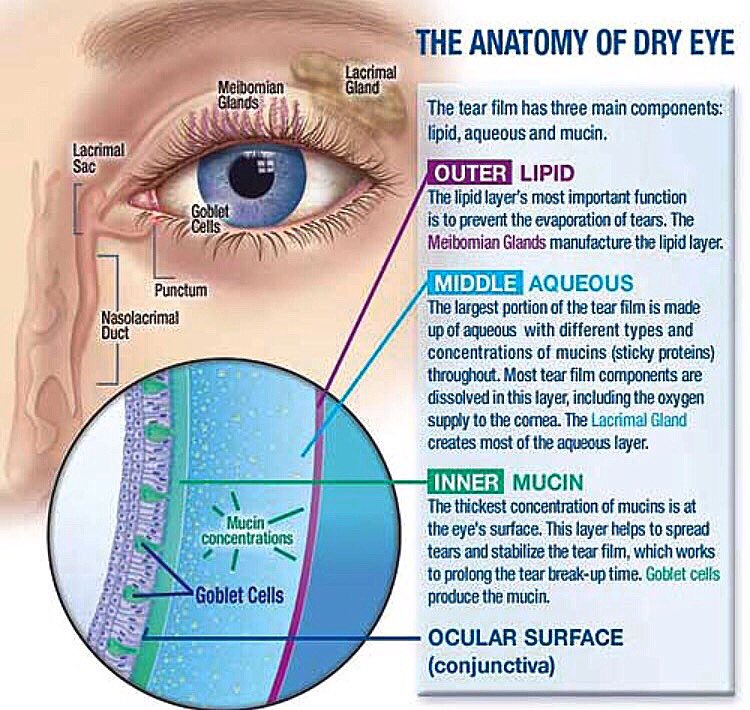
Diagnosis
The patient may suspect chronic dry eye, but a visit to an ophthalmologist is required to confirm the diagnosis and receive a treatment plan. The specialist will start the appointment by taking an anamnesis, after which the patient will have to undergo a set of diagnostic procedures:
- External examination, during which the doctor assesses the condition of the eyelids, the degree of their closing, as well as the frequency of blinking;
- Slit lamp biomicroscopy of the eye to evaluate the condition of the tear film;
- Additional tests and samples, such as the Schirmer test, which allows you to determine the rate of formation of tear fluid.
If necessary, the doctor can also take a smear for a cytological examination. If during the reception the ophthalmologist suspects the presence of systemic diseases that provoked xerophthalmia, the patient may be assigned an additional examination by specialized specialists.
Only after a diagnosis has been made can the doctor decide on the appropriate treatment.
Treatment of dry eye syndrome
Patients with mild xerophthalmia are given artificial tear drops. They supplement the natural lacrimal fluid, provide long-term and uniform hydration of the eye surface. Drops must be used regularly throughout the day.
If the patient’s condition is more severe, the doctor may prescribe prescription drops to stimulate natural tears.
Self-treatment or the use of alternative methods is unacceptable – this is fraught for the patient with an aggravation of the condition.
Prevention of xerophthalmia
Prevention should begin with lifestyle changes. If possible, reduce computer time and install a humidifier, especially if the patient spends a lot of time in the office.
When outdoors, wear wide goggles (sunglasses can be used) to protect your eyes from the wind, which also causes the cornea to dry out. Patients who smoke are advised to give up bad habits.
Dry eye syndrome and contact lenses
In rare cases, contact correction products may contribute to the development of dry eye syndrome. For example, if the patient uses an inappropriate solution or purchases poor-quality lenses. In this case, it is necessary to consult with a specialist and choose a more suitable remedy, as well as buy lenses only in specialized opticians.
It should also be noted that when xerophthalmia occurs, the use of contact lenses is difficult. In the early stages, the patient may experience minor discomfort, which can be minimized with moisturizing drops. However, if the violation has reached a high degree, the patient cannot even put on the means of contact correction.
Conclusions
Dry eye syndrome can develop under the influence of a number of factors – both external and related to the characteristics of the organism. It is not recommended to treat the violation on your own; in order to prescribe adequate therapy for , the ophthalmologist must determine the cause of dryness and the severity.
Dry eyes – a global problem of modern man
Dry eyes, tired eyes, reddened eyes – these are just a small part of the complaints that ophthalmologists are increasingly listening to. Patients feel a burning sensation in the eyes, dryness, redness of the protein, blurred, blurred vision.
Author
Elena Levina
Today it is difficult for us to imagine our life without computers, mobile phones, flickering TV screens. But along with the convenience that technology has brought to our lives, it has also brought new challenges. Among which one of the first places is occupied by the problem of eye health.
Dry eyes, tired eyes, reddened eyes – these are just a few of the complaints that are increasingly heard by ophthalmologists. Patients feel a burning sensation in the eyes, dryness, redness of the protein, blurry, blurry vision.
Dry eye syndrome – what is it?
Dry eye syndrome, or it is also called corneal xerosis, indicates a chronic lack of moisture on the surface of the eye. The eye lacks natural lubrication and this causes inflammation of the outer layer of the eye.
The eye lacks natural lubrication and this causes inflammation of the outer layer of the eye.
What ensures the normal functioning of the eye?
Ordinary tears serve as the first defense of our eyes from the penetration of external irritants (impurities, pollution). The main function of tears is to provide constant moist lubrication of the eyes. Tears are scattered in a thin layer on the cornea of the eye. They give the cornea a smooth surface, keep the eyes moist, and preserve the epithelium (the outer layer of the cornea). They contain enzymes that weaken the effect of external stimuli. Dry eye syndrome is characterized by the fact that the lacrimal gland ceases to secrete a sufficient amount of moisture, in addition, its chemical composition changes.
Dry eye symptoms
Dryness, burning, itching, fatigue, a feeling of sand in the eyes are the main symptoms that accompany the syndrome. As a rule, most patients complain of a deterioration in the condition of the eyes by the end of the working day. Dryness can increase sensitivity to bright light and is often accompanied by double vision. In other cases, patients may complain of watery eyes, which is also caused by excessive dryness. But in this case, tears do not alleviate the feeling of discomfort, since they do not have the lubricating properties of ordinary tears.
Dryness can increase sensitivity to bright light and is often accompanied by double vision. In other cases, patients may complain of watery eyes, which is also caused by excessive dryness. But in this case, tears do not alleviate the feeling of discomfort, since they do not have the lubricating properties of ordinary tears.
Discomfort is increased when the eye is exposed to external irritants such as dust, smoke, computer/TV screen. Also in conditions of dry air – during the summer heat or in rooms where the air conditioning system causes dry air.
According to statistics, women are more prone to this problem, since dry eyes are caused by estrogen deficiency in a woman’s body during pregnancy, breastfeeding, and menopause. Among men, the syndrome is less common, more often it appears with age. Age is one of the factors in the development of the syndrome: over the years, our body produces less and less fatty secretion, which affects the evaporation of the tear film.
How to get rid of dry eyes?
- Avoid environmental irritants such as dust, smoke, powerful air conditioning that causes dryness.

- If you have to sit at the computer for a long time, try to blink more often.
- Symptom can be relieved by periodically rinsing eyes with cold water.
In mild cases (up to moderate severity of symptoms), drops can be used without a doctor’s prescription, which serve as a substitute for tear fluid (“artificial tears”). Just remember that old generation drops, which are really effective, should not be used for a long time: their constant use can damage the cornea, because they contain preservatives.
New generation drops, packed in small disposable capsules, do not contain preservatives. Each ampoule is used for one day and then should be discarded. In more complex cases, the latest gel preparations are used to eliminate irritation, dryness, pain, and redness of the eyes. The most popular of them are VidisicR, Genteal Gel (GenTealCel). You may need drug therapy, warm massages, but all this is only on prescription.
Dry eye surgery
The main goal of surgical treatment methods offered in Israeli medical centers is to restore the moistened environment of the eye.

 Sometimes, the eyes can’t close completely after cosmetic eyelid surgery.
Sometimes, the eyes can’t close completely after cosmetic eyelid surgery.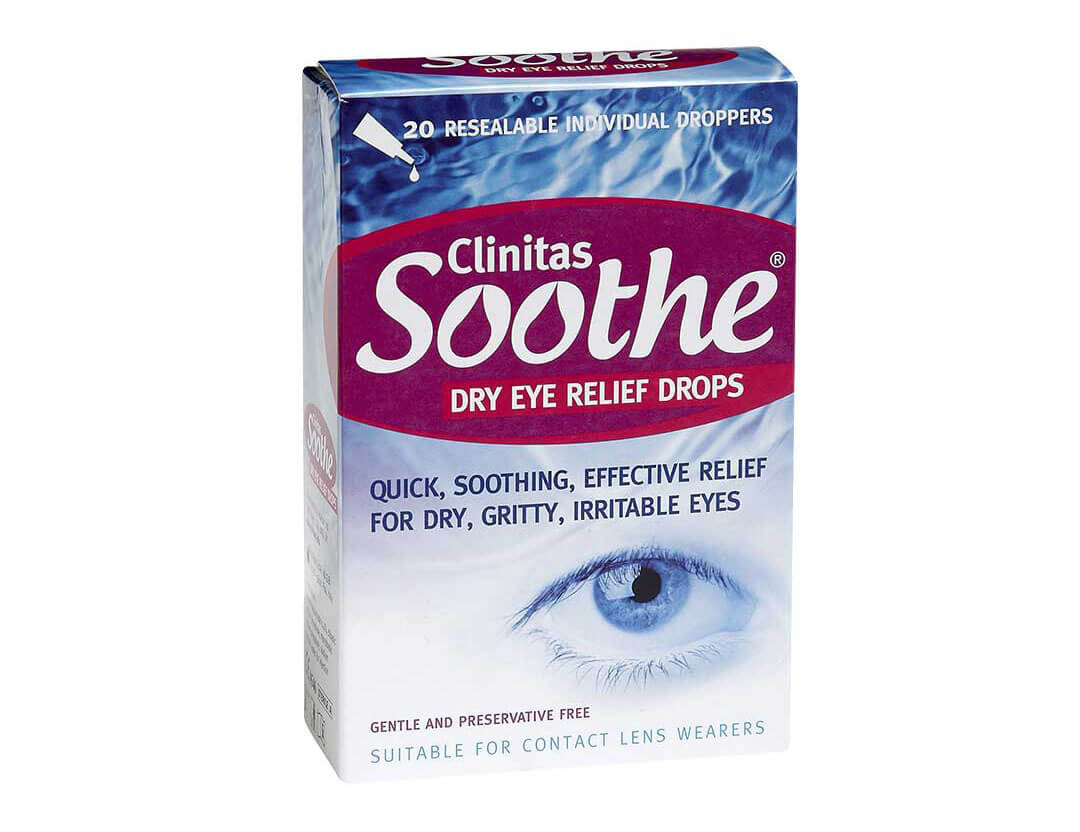 If the percentage of any of the components of the tear is reduced, the normal nutrition of the eye is disturbed. For example, if there are not enough lipids in the tear, the liquid will quickly evaporate, resulting in chronic dryness;
If the percentage of any of the components of the tear is reduced, the normal nutrition of the eye is disturbed. For example, if there are not enough lipids in the tear, the liquid will quickly evaporate, resulting in chronic dryness;